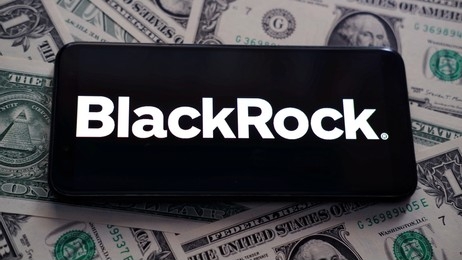Latest News
Web3’s quest for broader adoption mired by complex user interfaces | MATIC News


Over 15 years ago, Satoshi invented the world’s first independently managed, self-operating financial system through cryptography. He aspired to push us all into a financial renaissance where our aging financial system would be replaced with one that favors no one entity or being. A fully transparent financial system that’s open 24 hours a day, seven days a week, so that anyone can track fund flows on the blockchain.
And while this value proposition alone is more than sufficient to migrate from our legacy financial systems, Satoshi’s greatest breakthrough with the invention of blockchain and crypto is how a user accesses this network: a non-custodial wallet.
With only a mobile device and an internet connection, anyone can safely view, send, and receive value, which is the closest we’ve been to a financially inclusive world.
That being said, the blockchain industry, which can be more eloquently referred to as web3, has reached an inflection point where the next wave of adoption will likely come through entirely different channels than generations past. In other words, there are only so many new entrants that would have the inertia to deal with the operational headache of engaging with web3 technologies, given the relative return or utility of the technology is largely not there for the next generation of users. Coinbase CEO Brian Armstrong alluded to this on stage at the All-In Summit this year.
To be frank, market standards for an acceptable web3 user journey must improve if we want greater adoption amongst discovery audiences. The wallets attached to those user journeys need to do more than hold internet money if we expect those people to use them.
Why It Matters
The term ‘web3’ refers to the third iteration of the internet, which is built on the concept of digital, verifiable ownership. Contrary to the web2 paradigms, web3 users maintain and own all their information, financial assets, digital collectibles, and more, while ‘Big Tech’ holds this dear information in the web2 universe.
This ownership is achieved through non-custodial wallets where this information is only accessible by the owner of said wallet. The wallet owner can grant ‘read-only’ access to any internet protocol that might want to access the wallet’s contents, but again, it’s purely at the owner’s discretion.
In the words of the one and only Gordon Gekko, “The most valuable commodity I know of is information,” and depending on where you live, your willingness to share that information may vary. In the developed world, the average person has the luxury of robust banking and money-transmission services. Moreover, a certain level of implicit trust makes them feel secure with ‘owning’ nothing.
Sure, they can view and access the bank account balance shown on their account, but they technically ‘own’ something that’s continuously being lent out in exchange for crumbs. What’s more, users completely rely on a bank’s good faith to perform any action they wish to perform. This model is deeply flawed and hardly works here. Still, as you venture into the lesser-developed parts of the world, the overwhelming distrust of traditional banking systems has left much of the population unbanked.
It All Starts With the Wallet
We’ve made significant strides over the last decade and a half regarding developing, using, and adopting decentralized technologies. Additionally, regulatory clarity and legal recognition from governing bodies worldwide have recently accelerated, with Shanghai, most recently, recognizing Bitcoin as a digital currency. That said, it’s still painfully difficult to access and move value that’s on-chain, given that the interfaces that connect us to the technology are shockingly underdeveloped compared to the sheer size of the industry.
Currently, crypto wallets don’t allow you to do anything you couldn’t otherwise do with traditional banking products. Because transmitting value within this framework is arduous, Bitcoin’s battle to establish itself as a reasonable means of payment has been thwarted. Instead, crypto wallets are more or less an easy way to individually secure your (way more volatile) funds.
Furthermore, it’s never been more difficult to garner the attention of the general consumer. Popular media, short-form content, and a little bit of ADD have made it excruciatingly difficult for companies to reach target consumers. Because of this, the most successful technologies provide a utility that introduces extreme convenience or consolidation in one’s life. Take TikTok, for instance — beyond being a means of creative expression, it also serves as a social network and, increasingly, a search engine.
By serving multiple purposes, the value proposition for installing and spending time on the platform is strengthened because users enjoy the luxury of not jumping from platform to platform. In 2023, the average person has about 80 applications installed on their phone, nearly 2x more than a decade prior.
Because of this, we’re now entering a new era in tech in that new products and applications will need not only to solve a problem but also introduce convenience — a wallet is no different than that. This isn’t all that dissimilar from when Apple put a phone into the iPod all those years ago.
The Future
To unlock all of crypto’s potential, we must innovate from the ground up and ensure that an unnecessarily archaic user experience doesn’t obstruct its value proposition. We need to push paradigms and challenge established conventions to ensure that we spend the majority of the next 15 years building a new, free world instead of struggling through teaching our friends and loved ones about public and private keys.
Latest News
Crypto VC investment ‘continued rebound’ in Q2 with $3.2 billion invested – Galaxy | MATIC News


Venture capital investments in crypto continued to rebound in the second quarter, with a total $3.2 billion invested during the period — up 28% compared to $2.5 billion in the previous quarter, according to Galaxy Digital latest research report.
The report also identified a 94% quarterly surge in median pre-money valuation, which rose to $37 million from $19 million in the first quarter.
Galaxy noted the second quarter’s median pre-money valuation is the highest since the fourth quarter of 2021 and represents an almost all-time high. It attributed the surge to a more competitive market, giving companies greater negotiation leverage in deals.
Meanwhile, the second quarter median deal size grew to $3.2 million from $3 million, up 7% after remaining largely steady for five quarters. Deal count fell to 577 in the second quarter, down from 603 in the first quarter but up from less than 400 in the fourth quarter of 2023.
According to the report:
“Despite a lack of available investment capital compared to previous peaks, the resurgence of the crypto market… is leading to significant competition and [FOMO] among investors.”
The report highlighted a positive shift in crypto venture capital sentiment, buoyed by a nearly 50% year-to-date rise in Bitcoin and Ethereum prices. If the trend continues, 2024 will have the third-highest investment capital and deal count numbers after the bull markets of 2021 and 2022.
However, the report also noted that despite Bitcoin experiencing a significant rise since January 2023, venture capital activity has not kept pace, trading well below the levels seen when the flagship crypto last traded above $60,000 in 2021 and 2022.
The divergence is attributed to several factors, including crypto-native catalysts like Bitcoin ETFs and emerging areas such as restaking and Bitcoin Layer 2 solutions. Additionally, pressures from crypto startup bankruptcies, regulatory challenges, and macroeconomic headwinds, particularly interest rates, have collectively contributed to the breakdown.
Other data and trends
Specific project categories led fundraising — including Web3, which brought in $758 million or 24% of all capital. Infrastructure brought in over $450 million (15%), trading and exchanges brought in under $400 million (12%), and Layer 1 brought in under $400 million (12%).
Bitcoin Layer 2 networks continued to see significant investments of $94.6 million, up 174% on a quarterly basis. Galaxy said “investor excitement remains high” around the possibility of composable blockspace attracting DeFi and NFT projects to Bitcoin.
US companies dominated VC investment, attracting 53% of all capital and 40% of deals. Galaxy said US dominance exists despite regulatory change that could cause companies to leave the country and warned policymakers to be aware of their impact.
Early-stage firms received about 78% of capital, while late-stage companies received 20% of all capital. Galaxy said that larger general VC firms have left the sector or scaled down their activity, reducing the ability of later-stage startups to raise money.
Mentioned in this article
Latest News
Bittensor proposes burning 10% supply to stabilize TAO following $8 million exploit | MATIC News


OpenTensor Foundation (OTF) has proposed burning 10% of the Bitttensor (TAO) supply to stabilize the token’s price in response to a recent exploit that led to the loss of $8 million worth of the tokens.
The decentralized AI network has put forward a vote for users to decide on the burn. Active voters participating in the proposal will be rewarded with compensatory DAO rewards at a later date.
The exploit, which occurred on July 2, saw a Bittensor user lose 32,000 TAO tokens due to a leaked private key. The incident caused an immediate 15% drop in TAO’s price, hitting a six-month low of $227. The price has since rebounded slightly to $240.
Attack timeline
The attack timeline reveals that the incident began on July 2 at 7:06 P.M. UTC when funds started being transferred out of wallets.
OTF detected the abnormal transfer volume and initiated a war room by 7:25 P.M. UTC, and by 7:41 P.M. UTC, the team had neutralized the attack by placing validators behind a firewall and activating safe mode to prevent nodes from connecting to the chain.
During this period, the network was configured to only produce blocks, halting all transactions to prevent further losses and allowing time for a thorough investigation.
The root cause of the attack was traced back to a malicious package in the PyPi Package Manager version 6.12.2, which compromised user security. The package, posing as a legitimate Bittensor package, contained code designed to steal unencrypted coldkey details.
When users downloaded this package and decrypted their coldkeys, the decrypted bytecode was sent to a remote server controlled by the attacker.
The incident prompted an immediate response from the OTF team, which prioritized the security breach over regular updates and maintenance. The disruption has been a significant test for the network, highlighting both its vulnerabilities and the resilience of its infrastructure.
Aftermath
Despite the severity of the attack, some validators, such as RoundTable 21, confirmed that their delegators’ funds remained secure, emphasizing that the exploit did not impact all users uniformly.
However, the decision to halt the chain has led to a debate within the community about its implications for Bittensor’s claim of decentralization. Critics argue that the ability to pause the chain contradicts the principles of a decentralized AI network, while supporters believe it was necessary to protect users’ assets.
OTF plans to gradually resume normal operations of the Bittensor blockchain, ensuring a safe and responsible approach. Regular progress updates will be provided to the community.
As a precaution, users who suspect their wallets were compromised are advised to create new wallets and transfer their funds once the blockchain resumes normal operation. Additionally, upgrading to the latest version of Bittensor is strongly recommended.
Moving forward, Bittensor will implement enhanced package verification processes, increase the frequency of security audits, adopt best practices in public security policies, and improve monitoring and logging of package uploads and downloads.
The proposed token burn and ongoing security enhancements aim to restore confidence in the TAO ecosystem. The outcome of the vote will play a crucial role in stabilizing and securing the network, with the community eagerly awaiting further updates from the developers.
Mentioned in this article
Latest News
Europe’s largest Bitcoin miner Northern Data to launch IPO in the US | MATIC News


Europe’s largest Bitcoin miner, Northern Data AG, has announced plans for a substantial initial public offering (IPO) in the US at a valuation between $10 billion and $16 billion.
The IPO, which will be held on the Nasdaq stock exchange, is scheduled for the first half of 2025 and may also include selling a minority stake to investors prior to the public listing.
Following the IPO announcement, Northern Data’s shares on the XETRA stock exchange surged by over 5%, reaching €25. This positive market reaction indicates strong investor confidence in the company’s future prospects. The firm first considered an IPO in 2021 but decided against it at the time.
The upcoming offering will highlight two of Northern Data’s key business units: Taiga, which handles the company’s cloud computing activities, and Ardent, which manages its data centers. Both units are crucial to Northern Data’s strategy to capitalize on the rapidly expanding AI sector.
The crypto industry continues to face regulatory challenges. Previous attempts by digital asset firms to go public, including Circle, encountered difficulties due to regulatory scrutiny. However, Northern Data’s focus on AI and cloud computing may help it navigate these challenges more effectively.
AI pivot
Originally founded as Northern Bitcoin AG, Northern Data has grown into a significant player in the Bitcoin mining industry. In recent years, the company has diversified its operations to include artificial intelligence (AI) and cloud computing, responding to the decreasing profitability of Bitcoin mining and the growing opportunities in these fields.
In November 2023, Northern Data secured $610 million in debt financing from Tether. The investment is intended to strengthen Northern Data’s AI and cloud computing operations.
The financing followed a strategic partnership between the two companies announced in September 2023. The partnership aimed to focus on AI, peer-to-peer communications, and data storage solutions.
Northern Data’s pivot towards AI and cloud computing reflects a broader industry trend. As the profitability of Bitcoin mining declines, many companies, including Core Scientific and Hut 8 Corp, are exploring new revenue streams.
Committed to Bitcoin mining
While diversifying its business, Northern Data remains committed to Bitcoin mining and plans to continue expanding its footprint in the industry.
Peak Mining, the company’s US-based Bitcoin mining unit, is a significant part of its operations, with nearly 700 megawatts of high-performance computing data centers. In 2023, Peak Mining mined 2,298 BTC, generating over $64 million in revenue despite an 18% year-over-year decrease in production.
Northern Data’s presence in the US has been growing steadily. In May, the company acquired its second 300-megawatt mining site, further solidifying its position in the American market. The expansion highlights Northern Data’s long-term commitment to Bitcoin mining, even as it explores new technological frontiers.
Mentioned in this article
-

 Hot Projects4 months ago
Hot Projects4 months agoBitcoin Blasts Past $70,000 to Register New All-Time High | MATIC News
-

 Latest News4 months ago
Latest News4 months agoCourt upholds SEC’s unregistered securities claims against Gemini, Genesis’ Earn program | MATIC News
-

 Latest News2 months ago
Latest News2 months agoSix Coinbase customers claim the exchange is violating securities laws in new lawsuit | MATIC News
-
Hot Projects2 months ago
Bitcoin Will Be Set For New ATHs If It Breaks This Resistance: Analyst | MATIC News
-

 Hot Projects3 months ago
Hot Projects3 months agoBitcoin ETF Inflows Could Eclipse $1 Trillion, Predicts Bitwise CIO | MATIC News
-

 Hot Projects3 months ago
Hot Projects3 months agoOndo Finance Joins BlackRock Tokenized Fund As Inflows Surpass $160M | MATIC News
-

 Latest News4 months ago
Latest News4 months agoOver $1 billion wiped off HEX’s valuation following Richard Heart’s disparaging remarks | MATIC News
-

 Latest News2 months ago
Latest News2 months agoNew Hampshire representative proposes Bitcoin ETF investment to address state financial liabilities | MATIC News


